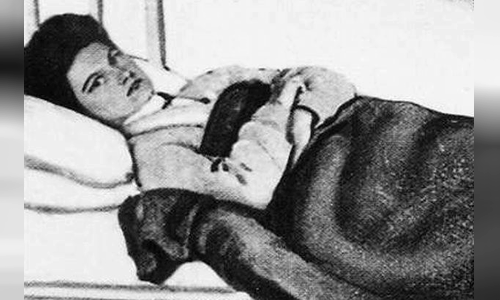Chinese authorities and experts disagree about who is the "number 0 patient" who was the first to contract nCoV in the Covid-19 epidemic.
Advances in genetic analysis can help track the origin of viruses through infected people. Combined with epidemiological studies, scientists can identify the first individuals to spread the virus and cause an outbreak.

Medical staff at Malaysia airport on February 26, when the country repatriated citizens from Wuhan Photo: AFP
Determining who these people are can help address important questions about how, when and why the outbreak started, helping to curb the epidemic or prevent it in the future.
Fernando Duarte, BBC's commentator, said that during the outbreak of the Covid-19 outbreak in China, we may never know who "patient number 0" really is.
Chinese officials initially reported the first case of nCoV infection detected on December 31, 2019, and the first cases were all linked to the South China Seafood Market in Wuhan, Hubei.
However, this claim is controversial when a Chinese scientist study published in the medical journal The Lancet said the first person was diagnosed with nCoV on December 1, 2019 and that person had not. used to go to Hoa Nam seafood market.
Ngo Van Quyen, a physician at Wuhan's Kim Ngan Dam Hospital, one of the study authors, said that the first nCoV patient was an elderly man with Alzheimer's disease. "He lived 4.5 bus stations away from Hoa Nam. Because of being sick, he basically didn't go out," Ngo said.
Wu also said that the other three had symptoms in the following days, two of whom had not been to Hoa Nam market recently. However, the researchers also found that 27 of the 41 patients admitted to the hospital during the "first contact with the market".
The hypothesis that the outbreak began in Hoa Nam market and that the virus was transmitted from an animal to a person then spread from person to person is still considered the most likely, according to the World Health Organization (WHO).
Can only one individual really trigger a major pandemic? The 2014-2016 Ebola epidemic in West Africa caused 28,000 people infected, more than 11,000 died. The epidemic appears in 10 countries, mainly in Africa, but there are also cases reported in the US, Spain, UK and Italy.

Mary Mallon at a hospital in New York in 1907 Photo: Commons
The scientists conclude that the Ebola outbreak originated in only one person: a two-year-old boy from Guinea may have been infected by playing in an empty tree trunk where a bat nest. They went to the boy's village, Meliandou, took samples and talked to locals to learn more about the origin of the Ebola epidemic before announcing the discovery.
The most famous "Patient No. 0" is Mary Mallon, who caused a typhoid outbreak in New York in 1906. Mallon is an Irishman who immigrated to the United States and worked as a cook for wealthy families. After many wealthy families in New York infected typhoid, doctors traced the source to Mallon. Wherever she worked, family members were injured.
Doctors called her "a healthy carrier," a person who has the virus but has mild or no symptoms so easily spreads it to others. There is growing evidence that some people are more likely to spread the virus than others, called "superinfection." Mallon is one of the earliest recorded cases.
However, the term "patient number 0" is associated with stigma. Many health experts oppose identifying "patient number 0" for fear that it could lead to fabricating false information about the disease or making that person a "criminal".
When the Covid-19 epidemic broke out in northern Italy, its people actively "hunted patients for zero". They quickly concluded that a 41-year-old man had just returned from China and was hospitalized because the symptoms of pneumonia were the ones who brought nCoV to Italy. His family only "sighed" when the test results showed that he was negative for nCoV.
Gaetan Dugas, a Canadian gay flight attendant, was one of the most criticized patients in history for being considered an HIV-positive person to the United States in the 1980s. But three decades later, scientists Learning revealed that he was not the first case. A 2016 study found that HIV spread from the Caribbean to the United States in the early 1970s.
In fact, it was during the HIV pandemic that the term "patient number 0" was accidentally created. While investigating the spread of HIV in Los Angeles and San Francisco in the early 1980s, researchers from the US Centers for Disease Control and Prevention (CDC) used the letter "O" to refer to an infection. "outside of California".
But other researchers misunderstood the letter as the number 0 and so the concept of "patient number 0" was born.



 EvangelineCabiles
EvangelineCabiles







